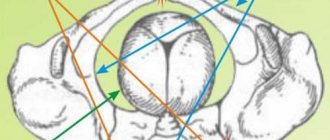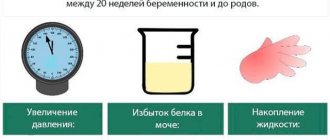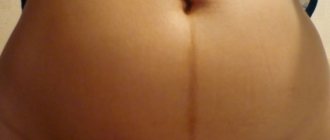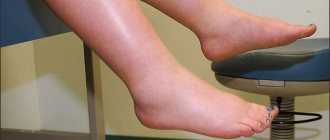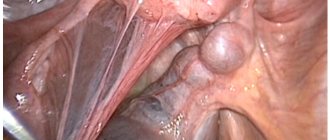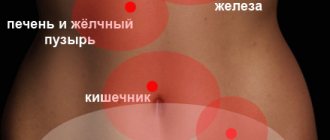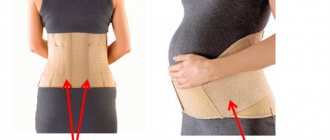Many patients are faced with the problem of sealing the suture after a cesarean section. Pathology can develop under the influence of various reasons. To determine whether a lump on a stitch is dangerous, a woman should undergo an examination at a medical center. Only after this can a treatment method be selected. You also need to understand that the problem is not always pathological. In many cases, the seal does not pose a threat to the life and health of the patient.
Kinds
The reasons why a doctor decides to perform a cesarean section can be very different. Depending on the delivery process and complications encountered during the delivery, incisions may be made in different ways, resulting in different types of sutures that require special care.
Vertical seam
If acute fetal hypoxia is diagnosed or the woman in labor begins to experience heavy bleeding, a caesarean section is performed, which is called corporal. The result of this operation is a vertical suture starting from the navel and ending in the pubic area. It is no different in beauty and in the future it will spoil the appearance of the body quite strongly, since the scars are nodular in nature, very noticeable against the background of the abdomen, and are prone to compaction in the future. This type of operation is performed quite rarely, only in emergency cases.
Horizontal seam
If the operation is performed planned, a Pfannenstiel laparotomy is performed. An incision is made transversely, above the pubis. Its advantages are that it is located in a natural fold of skin, the abdominal cavity remains unopened. Therefore, a neat, continuous (special application technique), intradermal (so that there are no external manifestations) cosmetic suture after a cesarean section is invisible on the body.
Internal seams
Internal sutures on the wall of the uterus in both cases vary in the way they are applied. The doctor is guided here by the goal of achieving the best possible conditions for faster wound healing without complications and reducing blood loss. You cannot make a mistake here, since the course of subsequent pregnancies depends on this. During a corporal operation, a longitudinal internal suture is made after a cesarean section; during a Pfannenstiel laparotomy, a transverse suture is made:
the uterus is stitched with a continuous single-row suture made of synthetic, very durable, self-absorbing material; the peritoneum, like the muscles, is sutured with continuous catgut stitches after cesarean section; the aponeurosis (muscle connective tissue) is sutured with absorbable synthetic threads.
The speed of healing, features of care, various complications - all these important points directly depend on what kind of incision was made during the caesarean section. After childbirth, doctors advise patients on all issues that cause them doubts, anxieties and fears.
About personalities . Hermann Johannes Pfannenstiel (1862–1909) was a German gynecologist who first introduced the surgical transverse incision, which received his name.
Reasons for tightening the suture after cesarean section
Surgical procedures involve suturing the soft tissues of the abdominal cavity using medical instruments. The choice of material is carried out on an individual basis, depending on the type of operation.
After surgery, the suture is gradually covered with connective tissue, which leads to the formation of a scar. Under the influence of certain factors, the scar is formed incorrectly. This manifests itself in redness of the skin and the appearance of compaction. Possible reasons for this phenomenon include:
- the appearance of postoperative hematoma after cesarean section;
- tissue infection;
- formation of a purulent process;
- autoimmune reaction of the body.
Most often, after a cesarean section, the suture is hard due to infection in the open wound. The problem can be caused by poor hygiene during the recovery period or neglect of the gynecologist’s recommendations. The first time after childbirth, you may need to take antibiotics. If the seam is hard and painful, you need to urgently visit a specialist. This situation requires timely treatment.
I also recommend reading how to properly care for a suture after a caesarean section, this is a very important point, since improper care leads to unpleasant consequences.
Features of the recovery period
It is the type of incision made that will determine how long the suture takes to heal after a cesarean section in terms of pain and other consequences of the operation. With a longitudinal one you will have to tinker longer, and the risk of complications will be much higher than with a transverse one.
Pain
After childbirth, a wound remains on the uterus, as well as on the anterior wall of the peritoneum, so it is not surprising that after a cesarean section the suture hurts (even severely) in the first weeks, or even months. This is a natural reaction of the tissue to the incision made, so the pain syndrome can be blocked with the most common painkillers:
immediately after the operation, analgesics (narcotics) are prescribed: morphine and its varieties, tramadol, omnopon; in the subsequent period, you can use analgin, supplemented with ketane, diphenhydramine and other anti-inflammatory non-steroidal drugs.
At the same time, do not forget that the painkillers used should be prescribed by a doctor, taking into account the lactation period. As for the question of how long the stitch hurts after a cesarean section, it depends on its type. The longitudinal one will bother you for about 2 months, the transverse one for 6 weeks with proper care and without complications. However, for another year, a woman may feel a pulling, unpleasant sensation in the operated area.
Hardness
Many people are concerned about the fact that after a caesarean section the suture is hard and painful: within 2 months this is quite normal. Tissue healing occurs. In this case, the scar does not immediately become soft and invisible. You need to come to terms with the fact that some time must pass, which can be calculated not even in months, but in years.
A vertical (longitudinal) hard scar lasts 1.5 years. Only after this period has passed will the tissues gradually begin to soften. Horizontal (transverse) cosmetic heals faster, so hardness and compaction above the seam (adhesions, tissue scarring) should go away within a year. Many people notice that over time a characteristic fold forms over the suture, which in the absence of pain and suppuration does not pose a problem. This causes scarring of nearby tissues. To avoid unpleasant consequences, it is recommended to do an ultrasound. It is much more serious if a lump appears above the suture after a cesarean section. Some people notice it already in the first year, while for others it manifests itself much later. The sizes can be completely different: from a small pea to a walnut. Most often it is crimson or purple in color. In this case, a visit to a doctor and an ultrasound scan are mandatory. This can be either harmless tissue scarring or fistula, inflammation, suppuration and even cancer formation.
The hardness of the scar, all kinds of folds and compactions around it in the first year after surgery are a fairly common phenomenon. If all this is not accompanied by severe pain and suppuration, there is no need to worry. But as soon as a lump appears on the seam and the above symptoms appear, consultation with a specialist and treatment are inevitable.
Discharge
If the suture after a caesarean section oozes ichor (clear liquid) in the first week, there is no need to worry. This is how healing occurs, it is a natural process. But as soon as the discharge becomes purulent or bleeding, begins to emit an unpleasant odor, or flows for too long, you should immediately contact a specialist.
Itching
For everyone who has had a caesarean section, the scar is very itchy after a week, which frightens some. In fact, this indicates the healing of the wound and nothing more. This is an indicator that everything is going its way. However, touching and scratching the belly is strictly prohibited. Now, if the scar not only itches, but already burns and bakes, causing suffering, you must definitely tell the doctor about it.
In order for the recovery period after cesarean to proceed without undesirable consequences and complications, a woman needs to learn how to properly care for the operated area.
More details about recovery after cesarean section in our separate article.
Through the pages of history . The name of the caesarean section operation goes back to the Latin language and is literally translated as “royal incision” (caesarea sectio).
Types of seals on the seam after childbirth
After childbirth, different types of seals may appear on the seam: inflammatory, infectious, dystrophic, as well as impaired lymph and blood circulation.
| View | a brief description of |
| Ligature fistula | Inflammation of the ligatures inside the skin or at the seam connecting the muscles leads to the accumulation of pus, which eventually breaks out. |
| Abscess | Purulent inflammation inside is delimited by a wall of connective tissue - a capsule. |
| Keloid | Gross growth of connective tissue with disturbed architecture due to improper regeneration process in the wound area. |
| Seroma | Accumulation of fluid in the cavity caused by impaired lymph circulation. |
| Hematoma | The accumulation of blood in a delimited cavity inside the soft tissues of the anterior abdominal wall is an early complication after surgery due to vascular trauma and bleeding between the connective tissue layers, which helps to delimit the cavity with blood. |
| Oncological neoplasm | Degeneration of the connective tissue, the scar becomes heterogeneous: foci of elimination appear around the wound, the suture darkens and becomes lighter, the symptom is tissue retraction; removal and histology of the resulting tissues are necessary for confirmation. |
Fistula
A ligature fistula develops in a wound if all the threads on the muscle suture have not dissolved, or if material remains in the skin suture. This leads to tissue irritation and the development of an inflammatory reaction: leukocytes intensively migrate to the site and absorb a foreign object, ultimately being destroyed. This is how pus is formed.
In the anterior abdominal wall, the structure of the connective tissue sheaths is such that it allows pus to accumulate for some time: a lump appears on the skin in the area of the scar during this period, it turns red, hurts when pressed and causes pain when touching the skin around it. After some time, the pus breaks out - a fistula tract is formed, through which the fistula empties. The patient's condition improves, the lump decreases.
Ligature fistula
However, if connective tissue bridges appear in the area of the suppurating ligature, delimiting the pus and preventing its complete drainage, the process becomes protracted, and pus is discharged periodically in “waves.” Rarely, the temperature may rise and the general condition may be disturbed. To diagnose a ligature fistula, it is enough to examine the outer skin; fistulography can be performed using contrast, especially to monitor the completeness of the cure.
For treatment, an antiseptic is injected into the fistula, the purulent contents are removed along with a ligature thread, which will require surgical intervention. It can be performed under local anesthesia. After this, new sutures are placed and antibiotic prophylaxis is carried out taking into account lactation. Anti-inflammatory therapy is also prescribed.
We recommend reading about methods for removing ligature fistula from a postoperative scar. From the article you will learn about the causes of formation and types of ligature fistula after cesarean section, symptoms and diagnosis of pathology, surgical and conservative treatment. And here is more information about how to remove the belly after a caesarean section.
Neoplasm with lymph – seroma
A neoplasm with lymph is called seroma; this condition develops due to damage to the lymphatic vessels: lymph flows out between the tissues, forming a cavity. A reddish dense lump forms on the skin, moderately painful, and an unpleasant burning sensation may be felt in the area of the lump.
In some cases, seroma goes away on its own: the drainage function of the vessels is restored, collaterals develop and lymph is absorbed. If this does not happen, then it is necessary to open the cavity and remove the lymph, and then apply new sutures. The formation is washed with antiseptics. No additional antibiotic treatment is required since the seroma is sterile.
Seroma
Abnormal scar tissue
Abnormal scar tissue in a wound can develop for a variety of reasons: defects in care, inflammation or infection, and also due to the body's individual predisposition to excessive growth of scar tissue. Such people usually have delicate, thin skin, all wounds and scratches take a long time to heal, and massive red scars remain at the site of injury for a long time.
After the operation, after a few weeks, rough tissue may begin to form, which even extends beyond the wound; the seam is very dense, dark purple in color, painful to touch, and you can even feel the friction of clothing. This type of scar is called a keloid.
Keloid scar
For an accurate diagnosis, it is necessary to consult a specialist to distinguish it from hypertrophic. With such a scar, excessive tissue growth also occurs, but its structure changes slightly.
The keloid scar should be protected from exposure and all postoperative recommendations should be carefully followed. You can use ointments that contain enzymes that help break down the connective elements in the rumen.
After 6-8 months, a more radical correction is possible by injecting special preparations around the scar, but all this requires consultation with a dermatologist and surgeon.
Abnormal scar tissue also includes its degeneration into malignant tissue. Significant compaction or retraction of the tissue develops, the surface becomes heterogeneous in color and character. Small dense spots of different colors may be observed around. For an accurate diagnosis, surgical excision involving intact tumors and histological examination are performed. Do not take a biopsy or damage the surface of the suspected tumor.
In the hospital
The first treatment of the suture after a caesarean section is carried out in the hospital.
After the examination, the doctor decides how to treat the seam: to avoid infection, antiseptic solutions are prescribed (the same brilliant green belongs to them). All procedures are carried out by a nurse. The bandage is changed daily after a cesarean section. All this is done over the course of about a week. After a week (approximately), the sutures are removed, unless, of course, they are absorbable. First, the knot that holds them is plucked off from the edge with a special tool, and then the thread is pulled out. Regarding the question of whether it is painful to remove stitches after a caesarean section, the answer is unlikely to be clear. This depends on different pain threshold levels. But in most cases, the procedure is comparable to eyebrow plucking: at least the sensations are very similar. In some cases, an ultrasound scan of the suture is prescribed after surgery to understand how the healing is progressing and whether there are any abnormalities.
But even in the hospital, before discharge, no one will be able to tell you exactly how long the suture will take to heal after a caesarean section: the process is definitely individual for everyone and can follow its own, separate trajectory. Much will also depend on how high-quality and competent the home care for the operated area will be.
Caring for sutures after laparoscopy
After discharge from the hospital, it is necessary to carefully care for postoperative sutures. This will help avoid the development of various complications, prevent the development of adhesive disease, and also speed up the process of recovery and tissue restoration.
- Every day you need to treat the area of postoperative sutures with special antiseptic preparations, which will be recommended by the attending surgeon. You can also use regular brilliant green or iodine. But it should be remembered that no drug should be used without first consulting a doctor.
- During the first days after laparoscopy, it is not recommended to wash the operated areas. Swimming is allowed only after 10-14 days. For hygiene procedures after surgery, you should not use your usual cosmetic products. Many experts advise choosing regular laundry soap.
- Many women who have undergone the procedure believe that after the stitches are removed, care for the operated areas of the skin can be stopped. This is absolutely false. You should definitely consult with your surgeon about how long you need to care for your scars. As medical practice shows, antiseptic treatment must be continued for approximately 7 days after removal of the sutures.
- Approximately 3-4 weeks after laparoscopy, it is allowed to use special absorbable ointments or creams that promote rapid healing of scars and make them less pronounced.
An operative method of delivery becomes inevitable when the fetus occupies the wrong place in the uterus or complications such as placenta previa or umbilical cord entanglement are present. Sometimes there are no direct indications for a cesarean section; it’s just that a woman, for example, no longer plans to have children and wants to undergo surgical sterilization during the operation.
Regardless of the reasons for delivery through surgery, it should be remembered that cesarean is an extensive abdominal intervention. During obstetrics, in order to remove the baby from the uterus, doctors have to make several incisions layer by layer. After the operation, the woman’s abdominal cavity is also sutured in layers, as a result of which a scar will remain on the anterior abdominal wall for life.
Home care
Before being discharged home, a young mother needs to find out from a doctor how to care for a suture after a cesarean section without medical assistance, at home, where there will be no qualified medical personnel and professional aids.
Do not lift heavy objects (anything that exceeds the weight of the newborn). Avoid heavy physical activity. Do not lie down constantly after a cesarean section, walk as much and as often as possible. If there are any complications, you will need to treat the seam at home with brilliant green or iodine, but this can only be done with the doctor’s permission if the scar gets wet and oozes even after discharge from the hospital. If necessary, watch a special video or ask your doctor to tell you in detail how to treat the seam at home. At first, it is not the scar itself that is wetted, but only the area of skin around it, so as not to burn the fresh wound. As for the timing of how long the suture needs to be treated after a cesarean section, this is determined by the nature of the discharge and other features of scar healing. If everything is in order, a week after discharge will be enough. In other cases, the time is determined by the doctor. To prevent seam divergence, wear a bandage that secures the abdomen. Avoid mechanical damage after cesarean section: so that the scar is not subjected to pressure and rubbing. Many people doubt whether it is possible to wet a seam: after discharge from the hospital, you can shower at home without a doubt. However, there is no need to rub it with a washcloth. Eat right for faster tissue restoration and faster healing of scars. By the end of the 1st month, when the wound has healed and the scar has formed, you can ask your doctor how to coat the suture after a cesarean section so that it is not so noticeable. Pharmacies now sell all kinds of creams, ointments, patches and films that improve skin restoration. You can safely apply ampoule vitamin E directly to the scar: it will speed up healing. A good ointment for sutures, which is often recommended for use after cesarean section, is Contratubes. Several times a day (2-3) for at least half an hour, expose your stomach: air baths are very useful. Check with your doctor regularly. It is he who will tell you how to avoid complications, what can and cannot be done, when to do an ultrasound of the suture and whether it is necessary.
So caring for a suture after a cesarean section at home does not require any special efforts or supernatural procedures. If there are no problems, you just need to follow these simple rules and pay attention to any, even minor, deviations from the norm. You should immediately report them to your doctor: only he can prevent complications.
This is interesting! Not long ago, scientists concluded that if the peritoneum is not sutured during a cesarean section, the subsequent risk of speck formation is reduced to almost zero.
Preventive measures
The degree of risk of developing undesirable consequences after surgery depends on the quality of preventive measures. First preventive care is provided to a woman in labor immediately after surgical procedures. Factors that can provoke infection in the uterine area are eliminated. The abdomen after a caesarean section is periodically lubricated with brilliant green.
After about 7-8 days, the stitches are removed. At this stage, the likelihood of complications occurring is highest. After the end of the hospital stay, home care begins, which includes the following nuances:
- Lifting weights and playing sports is strictly prohibited.
- If there is discharge from the rumen, it is necessary to carry out regular treatment with an antiseptic solution. Your doctor will tell you how to carry out the procedure correctly.
- At first, it is recommended to wear a bandage after cesarean section, which allows you to support the abdominal muscles.
- A month after the cesarean section, the suture is solid. This is considered normal, but at this stage measures can be taken to soften it and heal quickly. For this purpose, special regenerating ointments and creams are used. It is often recommended to use Contractubex ointment.
- Sexual intimacy during the recovery stage of the body is strictly prohibited.
- It is recommended to pay attention to nutrition during the recovery period. The presence of vitamin E in the diet helps speed up regenerative processes.
The complication may go away on its own, but this does not mean that the problem should be ignored. Regular visits to the doctor will help to identify visible signs of abnormalities in time.
Complications
Complications and serious problems with the suture after a cesarean section can occur in a woman at any time: both during the recovery period and several years later.
Early complications
If a hematoma has formed on the suture or it is bleeding, most likely, medical errors were made during its application, in particular, the blood vessels were poorly sutured. Although often such a complication occurs due to improper treatment or careless change of the dressing, when a fresh scar has been roughly disturbed. Sometimes this phenomenon is observed due to the fact that the sutures were removed either too early or not very carefully.
A fairly rare complication is suture dehiscence, when the incision begins to creep in different directions. This can happen after a caesarean section on days 6-11, since the threads are removed within this period. The reasons why the suture came apart could be an infection that prevents the full fusion of tissues, or weights over 4 kg that the woman lifted during this period.
Inflammation of the suture after cesarean section is often diagnosed due to insufficient care or infection. Alarming symptoms in this case are:
elevated temperature; if the suture festers or bleeds; its swelling; redness.
So what should you do if the suture after a cesarean section becomes inflamed and festers? Self-medication is not only useless, but also dangerous. In this case, it is necessary to consult a doctor promptly. In this case, antibiotic therapy (ointments and tablets) is prescribed. Advanced forms of the disease can only be eliminated through surgery.
Late complications
Ligature fistulas are diagnosed when inflammation begins around the thread used to stitch blood vessels during a caesarean section. They form if the body rejects the suture material or the ligature becomes infected. This inflammation manifests itself months later as a hot, red, painful lump, from which pus may leak from a small hole. Local processing in this case will be ineffective. Only a doctor can remove the ligature.
Hernia is a rare complication after cesarean section. Occurs with a longitudinal incision, 2 operations in a row, several pregnancies.
A keloid scar is a cosmetic defect, does not pose a threat to health, and does not cause discomfort. The reason is uneven tissue growth due to the individual characteristics of the skin. It looks very unaesthetic, like an uneven, wide, rough scar. Modern cosmetology offers women several ways to make it less noticeable:
conservative methods: laser, cryo-impact (liquid nitrogen), hormones, ointments, creams, ultrasound, microdermabrasion, chemical peeling; surgical: scar excision.
Cosmetic suture plastic surgery is selected by the doctor in accordance with the type of incision and individual characteristics. In most cases, everything goes well, so that no external consequences of cesarean are practically visible. Any, even the most serious, complications can be prevented, treated and corrected in time. And those women who will give birth after the CS need to be especially careful.
Wow! If a woman no longer plans to have children, the scar after a planned cesarean can be hidden under... the most ordinary, but very elegant and beautiful tattoo.
Treatment
The method of treating a seal on the suture after a cesarean section is selected taking into account the cause of the pathology. To heal purulent formations, treatment involves the use of antimicrobial agents. The seam area is regularly treated with antiseptic solutions. Antibiotics are administered orally or as intramuscular injections.
According to statistics, scar divergence is possible in 4-10% of cases . This is due to the anatomical features of the structure of the abdominal wall muscles in women. If the sutures diverge, a repeat operation is required. Uterine rupture is extremely dangerous for a woman’s life, so you should not delay treatment.
Fistula is treated surgically. The main cause of the pathology is a medical thread stuck in the soft tissues, which causes suppuration. It can only be removed surgically. The surgeon opens the wound, removes the foreign element and gets rid of the purulent masses. After the operation, the woman is prescribed anti-inflammatory therapy.
A lump above the suture, not accompanied by an inflammatory process, may disappear on its own over time. But in any case, it must be shown to a doctor. The need for treatment of a keloid scar is determined by the woman independently. This pathology only causes aesthetic discomfort. The scar after a cesarean section is removed by surgical excision or more conservative methods:
- chemical peeling;
- ultrasound treatment;
- laser removal;
- hormonal ointments;
- exposure to liquid nitrogen.
The most effective method of removing a postpartum scar is a laser procedure. It is characterized by the absence of painful sensations and a high degree of effectiveness. After 2-3 procedures there will be no trace left of the scar. The disadvantages of this method include high cost. In most cases, this operation is performed in private clinics.
Laser scar removal
Topical products are hormone based. Their use helps make the scar less noticeable. The disadvantages of the method include the cumulative effect. To see improvements, you need to use the cream for a long time.
The surgical treatment method has many opponents. During the operation, the scar tissue is completely excised. The scar is then reapplied. There is no guarantee that the situation will not repeat itself.
Subsequent pregnancies
Modern medicine does not prohibit women from giving birth again after a cesarean section. However, there are certain nuances relating specifically to the seam that you will have to deal with when carrying subsequent children.
The most common problem is that the suture after a cesarean section hurts during the second pregnancy, especially in its corners in the third trimester. Moreover, the sensations can be so strong, as if he is about to break apart. This causes panic for many young mothers. If you know what dictates this pain syndrome, your fears will go away. If a period of 2 years was maintained between the cesarean and subsequent conceptions, a discrepancy is excluded. It's all about the adhesions that form during the restoration of wounded tissue. They are stretched by the increased size of the abdomen - hence the unpleasant, nagging pain. You will need to inform your gynecologist about this so that he can examine the condition of the scar using an ultrasound. He can recommend some pain relief and emollient ointment.
You need to understand: the healing of a suture after a cesarean section is very individual, it happens differently for everyone and depends on many factors: the process of childbirth, the type of incision, the state of health of the mother, proper care in the postoperative period. If you keep all these nuances in mind, you can prevent many problems and avoid unwanted complications. After all, at this stage it is so important to give all your strength and health to the baby.
New articles
we are in social networks
After a caesarean section, the main complaints of patients concern the condition of the suture. Complications can arise for various reasons. The most common complication is considered to be a seal at the seam, but this complication is not always dangerous and in most cases does not require additional treatment. In order to understand whether a lump is dangerous or not dangerous, you need to consult a surgeon. Self-treatment can only worsen the situation and lead to the need for urgent surgical intervention.
What to do if a lump forms on your stomach
Help for the animal may be required in the event of a prolapsed hernia, suppuration of the suture, or infection of the wound. If the swelling does not subside for several days, increases in size, festeres, or your pet feels unwell, be sure to contact your veterinarian to avoid serious complications. The veterinarian, having established the cause, will prescribe symptomatic treatment aimed at normalizing the general condition of the operated animal.
When a postoperative hernia forms, if there is no pinching, the problem is solved by repeated sutures or reduction of the hernial protrusion. If the process is started, surgery may be required.
If the tumor is malignant or benign, the veterinarian, after tests, decides on the choice of treatment. The animal is prescribed maintenance therapy or surgery.
In any case, the choice of treatment methods for the appearance of a lump on the abdomen, above or below the suture, depends on the root cause, the general condition of the cat, and diagnostic results.
Do not self-medicate so as not to harm your mustachioed pet. All manipulations and therapy should be prescribed by a veterinarian.
Danger signs
Among the dangerous signs of a developing complication after a cesarean section, one can highlight compaction and suppuration of the sutures. This is a fairly common phenomenon that is noticeable to the naked eye when examining the seams. Problems with seams can arise for various reasons, including:
infection of the suture, low quality of suture material, insufficient qualifications of the surgeon, rejection of the suture material by the woman’s body.
Every woman should understand that the suture must be carefully monitored for several months after surgery, and if phenomena such as induration, pain, redness or suppuration are detected, it is necessary to immediately seek advice from a surgeon.
Keloid scar
Another most common complication after cesarean section is the formation of a keloid scar. Recognizing it is also not difficult.
The seam becomes rough, hard and often protrudes above the surface of the skin.
There is no pain, redness around the scar or pus.
A keloid scar does not pose a threat to the health of patients and is only an aesthetic problem. The causes of scar formation are considered to be individual characteristics of the body.
Today there are several methods of treating this unsightly phenomenon:
- Laser therapy is based on resurfacing the scar using a laser. Several therapy sessions can make the scar less noticeable.
- Hormonal therapy includes the use of special medications and ointments containing hormones. Using creams will help reduce scar tissue and make the scar less pronounced.
- Surgical treatment consists of complete excision of scar tissue followed by the application of new sutures. This method does not guarantee that a normal scar will form at the site of the removed scar.
In order to avoid all these and other complications in the postoperative period, it is necessary to carefully care for the suture and follow all doctor’s recommendations. If any signs of complications appear, visit your doctor immediately, in this case you can avoid surgical treatment.
(3 votes, result: 5.00 out of 5)
source: yaposlerodov.ru
Many patients are faced with the problem of sealing the suture after a cesarean section. Pathology can develop under the influence of various reasons. To determine whether a lump on a stitch is dangerous, a woman should undergo an examination at a medical center. Only after this can a treatment method be selected. You also need to understand that the problem is not always pathological. In many cases, the seal does not pose a threat to the life and health of the patient.
Ligature fistula
This complication is the most common after cesarean section. After the operation, the incision is sutured using special threads - ligatures. These threads can be absorbable or non-absorbable. The healing time of the scar depends on the quality of the ligature. If the material was of high quality, used within the acceptable expiration dates, in accordance with the norms and rules of treatment, complications are unlikely.
But if the ligature was used after the specified expiration date or an infection got into the wound, an inflammatory process begins to develop around the thread, which can form a fistula several months after cesarean.
A fistula is very easy to detect. It has such signs as a non-healing wound, from which a certain amount of pus is periodically released. The wound may crust over, but then it opens again and pus is released again. This phenomenon may be accompanied by elevated body temperature, chills and general weakness.
If a fistula is detected, the help of a surgeon is necessary. Only a doctor can detect and remove an infected thread. Without removing the ligature, the fistula will not go away, but will only increase. Local treatment will not bring positive results. After removing the thread, the suture requires additional care, which will be prescribed to you by the surgeon.
If the infection process is prolonged, or several fistulas have formed on the scar, surgery may be required to remove the scar with repeated stitches.
Causes
To understand why a lump appeared under the suture after surgery, you should see your doctor. If the lump does not hurt and there is no pus coming out of it, you just need to follow the recommendations for caring for the suture and do not try to self-medicate. If even scanty purulent discharge is detected, it is necessary to consult a doctor. Failure to take action in a timely manner or attempts to resolve the issue on your own can lead to serious complications that can only be eliminated through surgery.
The main causes of suppuration of postoperative sutures:
- Improper care of the seam, which can lead to a bacterial infection.
- Failure to follow the recommendations given by the doctor upon discharge from the hospital.
- Poor quality sutures.
- Rejection by the body of the threads used to stitch the incision.
- Use of low-quality materials.
Whatever the reason for the appearance of a lump after surgery, you should not delay visiting the surgeon in the hope that everything will go away on its own. Suppuration can lead to sepsis and death.
Seroma
Seroma is also a common complication after cesarean section. But unlike a ligature fistula, this complication can go away on its own, without additional treatment. A seroma is a fluid-filled lump on a suture. It occurs at the intersection of lymphatic vessels, which cannot be sutured after the incision. At the intersection of lymphatic vessels, a cavity is formed that is filled with lymph.
Without additional dangerous signs, seroma does not require treatment and goes away on its own within a few weeks.
If a seroma is detected, you should immediately visit a surgeon to determine an accurate diagnosis and exclude suppuration.
Why did a lump appear above the seam?
The hardness of the skin at the site of incision at the recovery stage is considered absolutely normal. If there is no pain signal and purulent masses, there is no need to worry. Softening of soft tissues begins only one and a half years after surgical procedures. A lump on the seam indicates the development of a pathological process. In this case, you cannot do without a visit to the gynecologist’s office.
Do you have a vertical or transverse seam?
VerticalTransverse
A compaction in the form of a lump of any size may precede the formation of a fistula after a cesarean section. Ideally, after a certain period of time after surgery, the stitches placed on the uterus should resolve on their own.
If this happens for some reason, the inflammatory process begins. Purulent masses accumulate under the skin. After some time, a purulent head forms on the lump, through which dead leukocytes come out.
With a ligature fistula, a throbbing pain appears at the site of scar formation, and the skin begins to turn red. There may be a bursting sensation. It is extremely important to see a doctor on time and start therapy.
Sometimes compactions after cesarean section provoke disruption of regenerative processes. In medicine, a scar caused by this reason is called a keloid. It does not pose a threat to the patient, but is aesthetically unattractive, which causes psychological discomfort. It is recommended to remove such a scar using a laser.
Another common complication of surgical procedures is seroma. It differs from a fistula in that it can disappear on its own.
Seroma is a pathological compaction in the suture area, inside of which there is liquid content. It is formed at the intersection of lymph nodes. It is almost impossible to suture soft tissue in this area after dissection. In this place a cavity is formed in which lymph accumulates. After detecting a seroma, you should visit a doctor to determine the cause of the pathology.
One of the early complications is suture dehiscence after cesarean section. This usually occurs 7-10 days after surgery. Reasons for seam dehiscence include lifting heavy objects weighing more than 4 kg and contracting infectious diseases. This condition is very dangerous for a woman's health. It is important to contact a surgeon and/or gynecologist in time to prevent complications.

